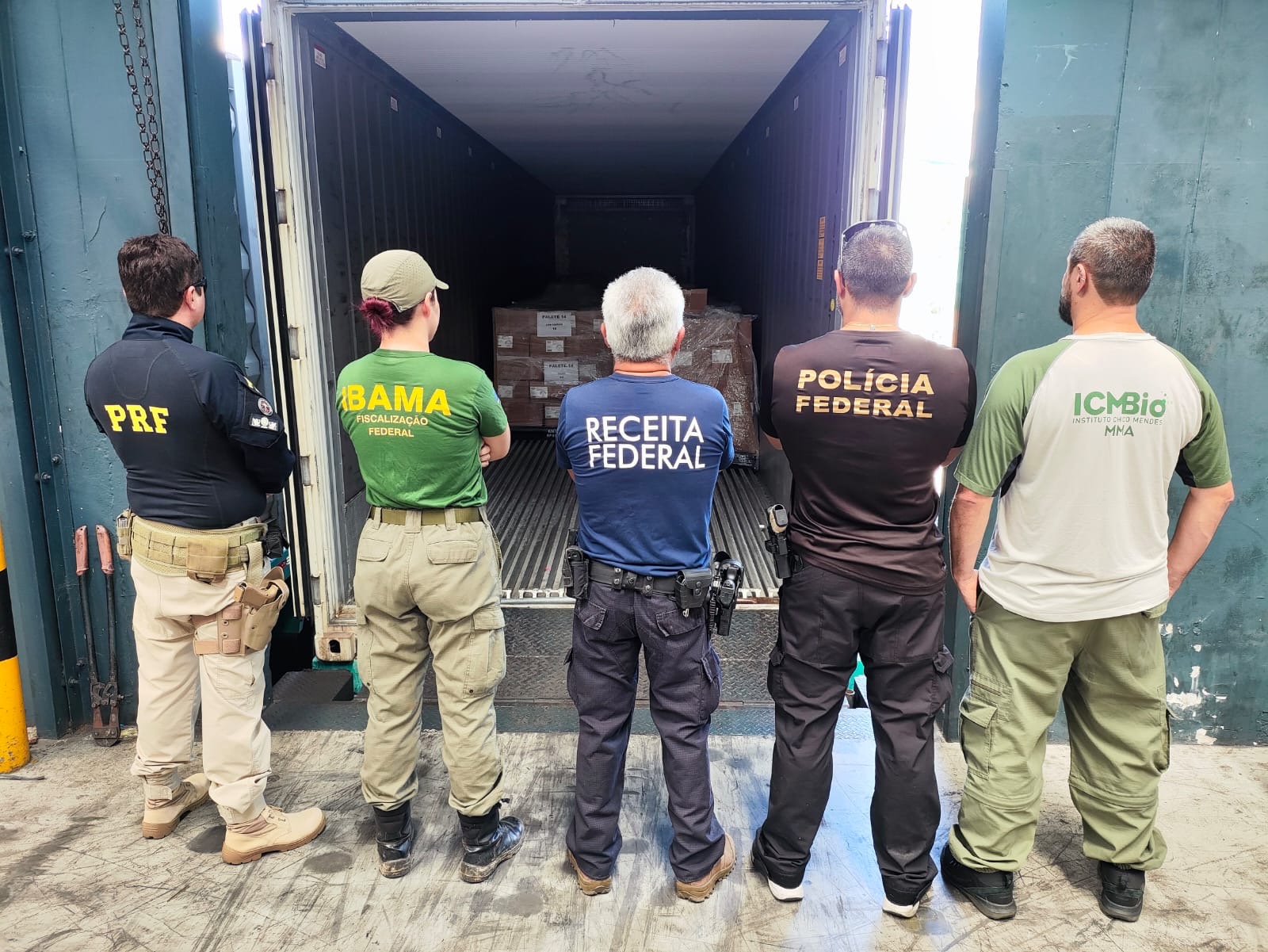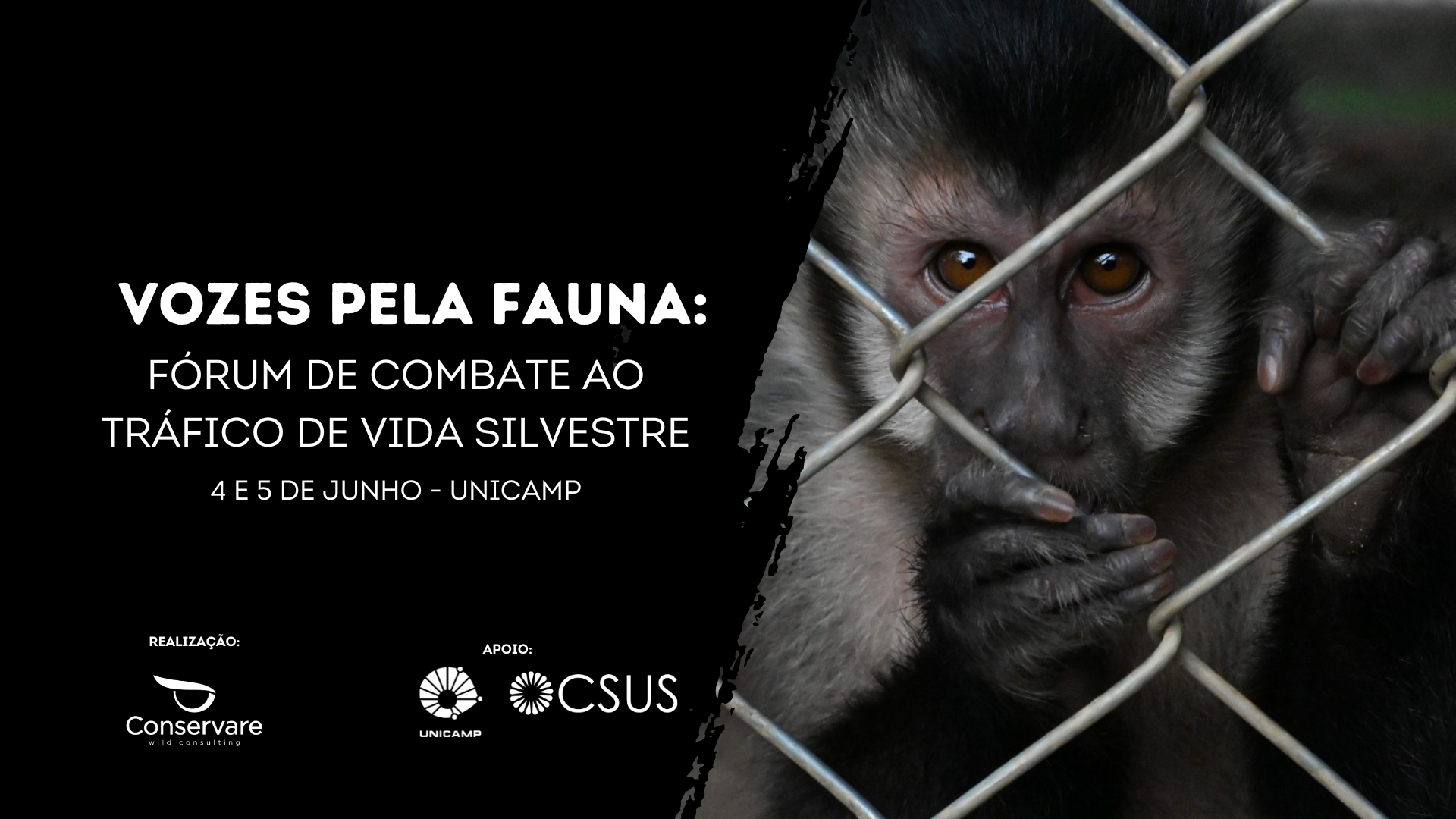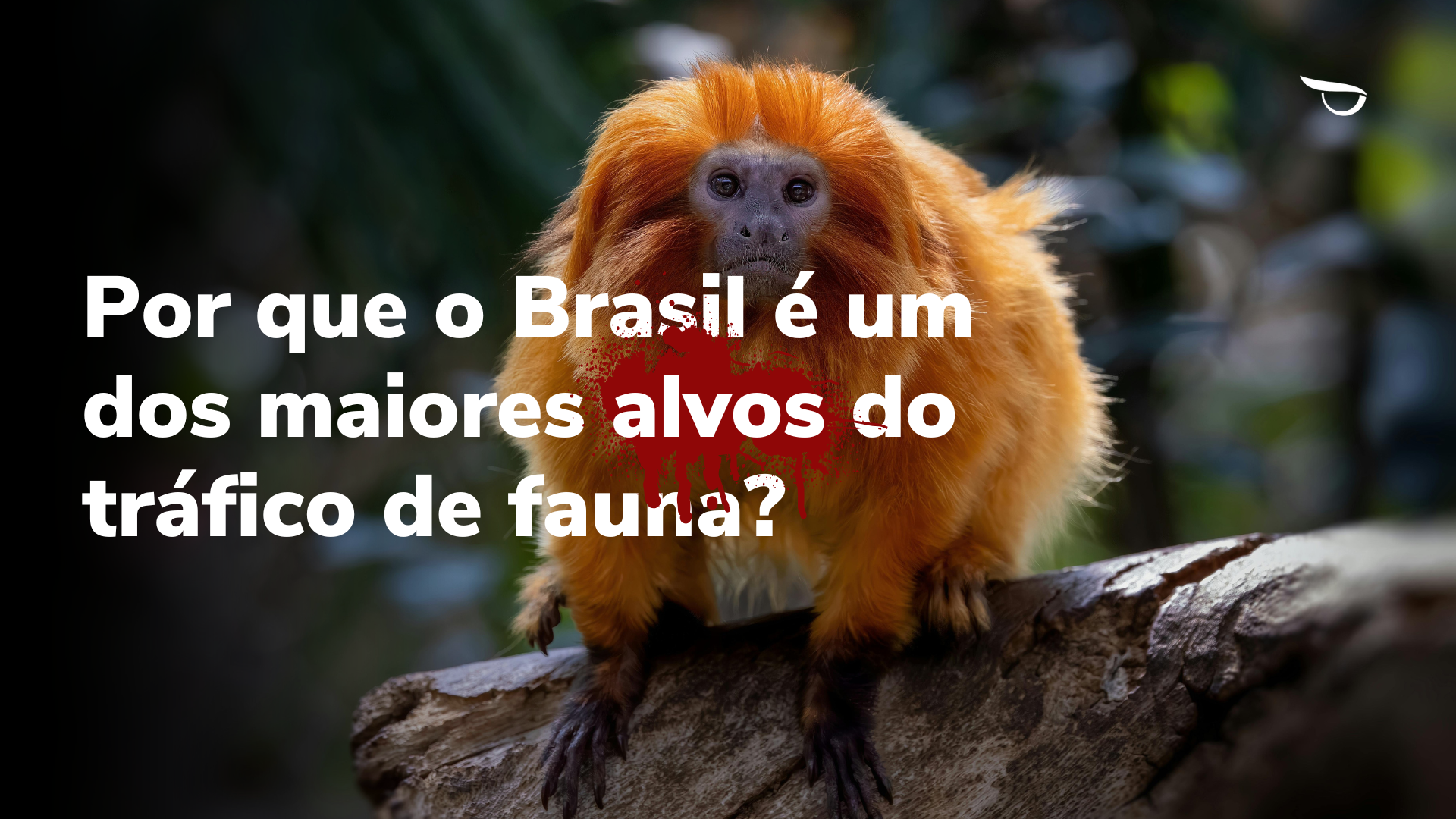Brazil is among the main targets of wildlife trafficking in the world and this is one of the exploitation practices that most threaten biodiversity. Here, this activity is considered a crime by the Environmental Crimes Law (Law No. 9.605/98) and encompasses various actions such as the capture, collection, hunting, transportation, captivity, breeding and sale of wild species, all carried out without the proper permission, license or authorization from the competent authorities.
Wildlife trafficking is one of the most widespread and lucrative illegal activities in the world, and the associated causes are generally attributed to socio-economic characteristics, especially in regions with high biodiversity and social inequality. In this scenario, marked by high unemployment rates and low levels of education, wildlife trafficking emerges as a potentially lucrative activity, often serving as a supplementary source of income for the families involved.
Likewise, due to its high profitability, wildlife trafficking has financed other illegal activities and transnational crimes, causing economic damage and political destabilization in countries where the protection of endangered species is limited. In these regions, those involved in criminal activity also hinder development, investment and tourism. More than a question of conservation or animal welfare, trafficking and illegal trade wildlife should be treated as a national and international security problem. According to data from FreelandBrazil is the country with the highest absolute number of animals described in the news that reported seizures in actions to combat wildlife trafficking between 2018 and 2020. Considering only live animals, at least 141,845 individuals were counted.

Data: Trafficking Observatory - Freeland
Research carried out by Conservare for the WCS Brazilin the year 2024, showed that not only live animals are the target of this practice, but also dead, taxidermied animals, parts and also substances, configured in biopiracy. All of this makes enforcement work on highways, airports and ports in Brazil even more difficult, given the high capacity of traffickers to mask possible cases of trafficking. In the same survey, it was found that only in the airports in the national territory where IBAMA has a team, in the last 10 years (January 2015 to May 2024) 789 seizures were recorded
A threatened biodiversity
Brazil is home to around 20% of global biodiversityThis includes countless species of birds, reptiles, mammals and amphibians that are the target of trafficking. Among the most targeted animals are parrots, macaws, lion tamarins and jabutis. The big problem is not only the removal of these animals, but mainly the high death rate due to the poor conditions in which these animals are transported and handled from the moment of capture to the final consumer. It is estimated that for every 10 animals caught, only 1 reaches the end consumer alive, and this represents a great loss of life on earth, a great loss of genetic variability in nature and also a great risk to human health.
The consumer market includes both the Brazil and abroad. Internationally, demand comes mainly from countries in the Europe, Asia and North AmericaIn the domestic market, these animals are sought after for private collections, zoos or as pets. In the domestic market, cultural use, such as in spiritual rituals, for entertainment and social statusalso contributes to the pressure on species.
Environmental and economic impacts
Wildlife trafficking causes serious ecological imbalances. The removal of animals interferes with the reproduction and population control of other species, whether plant or animal, affecting the entire ecosystem. In the long term, this leads to the local or even global extinction of species.

The economy is also affected. It is estimated that wildlife trafficking generates around US$ 2 billion per year in Brazilaccording to information from Libyan Institute. This money, however, does not generate a positive return for society, as it is linked to criminal organizations, tax evasion and corruption, and is often associated with other types of crime.
According to ICMBio, 1,254 species and subspecies of Brazilian animals are threatened with extinction. Of this total, 360 species are critically endangered. Check out the Red List of Threatened Species by clicking here.
It is estimated that since the 1500s, the following have been declared extinct 311 species of terrestrial vertebrates in the world. However, some scientists believe that the number of extinct species is higher than stated, especially when we bear in mind that we don't know 100% of the species present on planet Earth and also all the species of invertebrates not accounted for.
Human action is responsible for many animal extinctions. A United Nations Organization (UNO) warns that 150 species become extinct every day.
Lack of supervision and ineffective legislation
Brazil faces difficulties in combating wildlife trafficking due to the vast territory and limited resources. Brazil also shares a border with 10 countries in South AmericaFor each of these countries, we face various structural challenges in terms of customs control.
According to a report published by G1Although inspections have increased in recent years, the country still lacks teams and investment in environmental monitoring technology. In addition, the penalties imposed on traffickers are often lenient, which means that does not discourage recidivism.
As detailed by Jornal da USP, in 2020, actions such as those carried out by IBAMA and the Environmental Police manage to recover animals and impose fines. However, once reintegrated into the wild, many animals are unable to survive due to habitat loss. The work carried out by Wild Animal Screening and Rehabilitation Centers (CETRAS) is crucial for the survival, rehabilitation and reintegration of these animals, but there is still a need for significant investment in order to provide better working conditions for the staff involved, as well as welfare conditions for the animals.
Furthermore, it is worth noting that, to this day, trafficking in wild animals is not specifically defined in the law. Environmental Crimes Law (Law No. 9.605/98). This legal loophole makes it difficult to apply stricter penalties against this conduct, since actions related to trafficking end up falling into more generic categories, such as mistreatment or illegal trade in fauna. Currently, the PL 752/2023 which aims to increase the penalties for environmental crimes. It is currently awaiting the opinion of the rapporteur in the Constitution, Justice and Citizenship Commission (CCJC) and we may talk more about it and other issues related to monitoring and combating biodiversity trafficking soon on our communication channels.

Photo: Conservare Wild Consulting archive
Measures to tackle illegal trade
The fight against wildlife trafficking requires coordinated action between various organizations such as IBAMA, ICMBio, Federal Police, Federal Revenue Service, Environmental Military Police, Federal Highway Police as well as institutions from third sectorwhich can help in the process of taking in and disposing of these animals. It is also worth highlighting the important role that private companies can play a role in protecting fauna, mitigating damage, financing projects and developing actions focused on this issue, as well as promoting the breeding of endangered species.
Public awareness is a key factor, as campaigns developed by the São Paulo State Secretariat for the Environment, Infrastructure and Logistics (SEMIL) emphasize the importance of reporting suspicious activities and not acquiring wild animals of illegal origin. In this sense, the development of public policies such as the National Action Plans (NAPs) e Territorial Action Plans (PATs) of Biodiversity Conservation, not only carries out important research that serves as the main foundation strengthening combat work, but also develops citizen science actions, raising awareness and making the general public an important part of the work. tool to combat this crime.
The creation of international enforcement networks and the exchange of information between countries are strategies that can strengthen control. Strengthening public policies aimed at environmental conservation is also essential, as pointed out in a report by the UN.
O Trafficking Observatory of Freeland is one of the most important tools today in understanding the real numbers of seizures, surveillance, communication and trafficking routes.
Similarly, in Brazil Wildlife Conservation Society (WCS-Brazil)together with the Federal Police, develops IMPACT workshop (Multi-Agency Initiative to Combat Trafficking in Wild Animals), which promotes the connection between the main Brazilian inspection agencies, as well as encouraging education and information for the lay public.
Conclusion
Brazil is a target for wildlife trafficking due to its biodiversity, the high demand for wild animals and gaps in enforcement, combined with the country's social inequality. The impact of this illegal trade goes far beyond environmental losses: it feeds criminal networks and threatens the ecological, socio-economic balance and represents a major risk to global health, the COVID-19 pandemic being one of the most recent examples of this. Tackling this issue requires investment in enforcement, stricter legislation and raising public awareness of the damage caused by this practice.

Conservare, in all its activities, seeks to contribute to the fight against this type of crime, whether through strategic partnerships with companies, public bodies and third sector institutions, or by actively developing conservation projects and implementing public policies to combat trafficking.
With a view to sharing in-depth knowledge on this subject with each of you, as well as promoting the exchange of information and generating productive connections between institutions, on the days June 4th and 5thwe will be promoting the 1st edition of our event Voices for wildlife: Forum to Combat Wildlife Trafficking. The meeting will feature big names in the fight against wildlife trafficking in Brazil, with presentations, debates and a lot of sharing of experiences.
This is an unprecedented event and you can take part in two formats: Online (300 places only) and face-to-face (+500). It will take place at Unicamp.
Registration is now open CLICK HERE. Secure your place now, as they may run out at any moment!

Author of the text and design: Beatriz Morais
Technical review: Celina Yoshihara and Carolina Vanin
References
- UFSM. Wildlife trafficking threatens the biodiversity of Brazilian fauna. Available at: https://www.ufsm.br/midias/arco/trafico-animais-silvestres#:~:text=SegundoaRenctasdecada,dasquadrilhaseorganizaçõescriminosas. Accessed on: January 23, 2025.
- USP JOURNAL. Brazil is responsible for trafficking 38 million wild animals a year. Available at: https://jornal.usp.br/campus-ribeirao-preto/o-brasil-e-responsavel-pelo-trafico-de-38-milhoes-de-animais-silvestres-por-ano/. Accessed on: January 23, 2025.
- SEMIL. How to help combat trafficking and the illegal trade in wild animals. Available at: https://semil.sp.gov.br/educacaoambiental/2023/10/como-ajudar-a-combater-o-trafico-e-o-comercio-ilegal-de-animais-silvestres/. Accessed on: January 23, 2025.
- G1. Where is Brazil's fauna? Overview of animal trafficking reveals worrying future. Available at: https://g1.globo.com/sp/campinas-regiao/terra-da-gente/noticia/2019/06/24/onde-esta-a-fauna-brasileira-panorama-do-trafico-de-animais-revela-futuro-preocupante.ghtml. Accessed on: January 23, 2025.
- UN. UN report highlights impacts of wildlife trafficking on global biodiversity. Available at: https://news.un.org/pt/story/2024/10/1838456. Accessed on: January 23, 2025.
- LIBIO INSTITUTE. Wildlife trafficking dossier. Available at: https://institutolibio.org.br/traficodeanimais/. Accessed on: January 23, 2025.
- Lawson, K., & Vines, A. (2014). Global impacts of the illegal wildlife trade: The costs of crime, insecurity and institutional erosion. London, UK: Chatham House. https://www.chathamhouse.org/publications/papers/view/197367. Accessed June 14, 2017
- Regueira, R. F. S., & Bernard, E. (2012). Wildlife sinks: quantifying the impact of illegal bird trade in street markets in Brazil. Biological Conservation, 49, 16-22
- Alves, R. R. N., Lima, J. R. de F., & Araújo, H. F. P. (2013). The live bird trade in Brazil and its conservation implications: an overview. Bird Conservation International, 23, 53-65
- Souto WMS, Torres MAR, Sousa BFCF, Lima KGGC, Vieira LTS, Pereira GA, Guzzi A, Silva MV, Pralon BGN (2017) Singing for cages: The use and trade of passeriformes as wild pets in an economic center of the Amazon - NE Brazil route. Trop Conserv Sci 10:1-19



